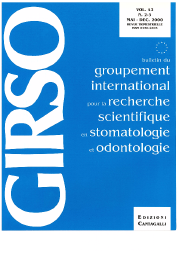MASTICATORY MYOFASCIAL PAIN: AN EXPLANATORY MODEL INTEGRATING CLINICAL, EPIDEMIOLOGICAL AND BASIC SCIENCE RESEARCH
Keywords:
Myofascial Pain, muscles, pain, etiology, mechanismsAbstract
Masticatory myofascial pain (MMP) is a regional muscle pain disorder characterized by localized muscle tendemess in taut bands of skeletal muscles and pain and is one of the most common causes of persistent regional pain. The affected muscles may also display an increased fatigability, stiffness, subjective weakness, pain in movement, and slight restricted ROM that is unrelated to joint restriction. Although the exact etiology of MMP is unclear, recent research has improved our understanding of factors that contribute to the development and progression of MMP. Understanding these factors can help to validate an explanatory model for etiology and treatment of MMP. This model includes peripheral mechanisms from local biomechanical strain leading to the onset of early cases of MMP while central mechanisms associated with psychosocial factors lead to increased chronicity of MMP. As MP persists, chronic pain characteristics often precede or follow it's development. Management of the syndrome naturally follows from this model with therapy to rehabilitate the trigger points (TrPs) while focusing effort on reducing all contributing factors.Downloads
Published
Issue
Section
License
I hereby certify that the authors of the above manuscript have all:
1. Conceived, planned, and performed the work leading to the report, or interpreted the evidence presented, or both;
2. Written the report or reviewed successive versions and shared in their revisions; and
3. Approved the final version.
Further, I certify that:
1. This work has not been published elsewhere and is not under revision in another journal;
2. Humane procedures have been followed in the treatment of experimental animals (if applicable);
3. Investigations in humans was done in accordance with the ethical standards of the responsible committee on human experimentation or with the Helsinki Declaration (if applicable).
4. This paper has been carefully read by a native English speaker who is familiar with the field of work (this applies to authors who are not fluent in English); and
5. The copyright of the article is transferred from the authors to the Bulletin du Groupement International pour la Recherche Scientifique en Stomatologie et Odontologie upon acceptance of the manuscript.



